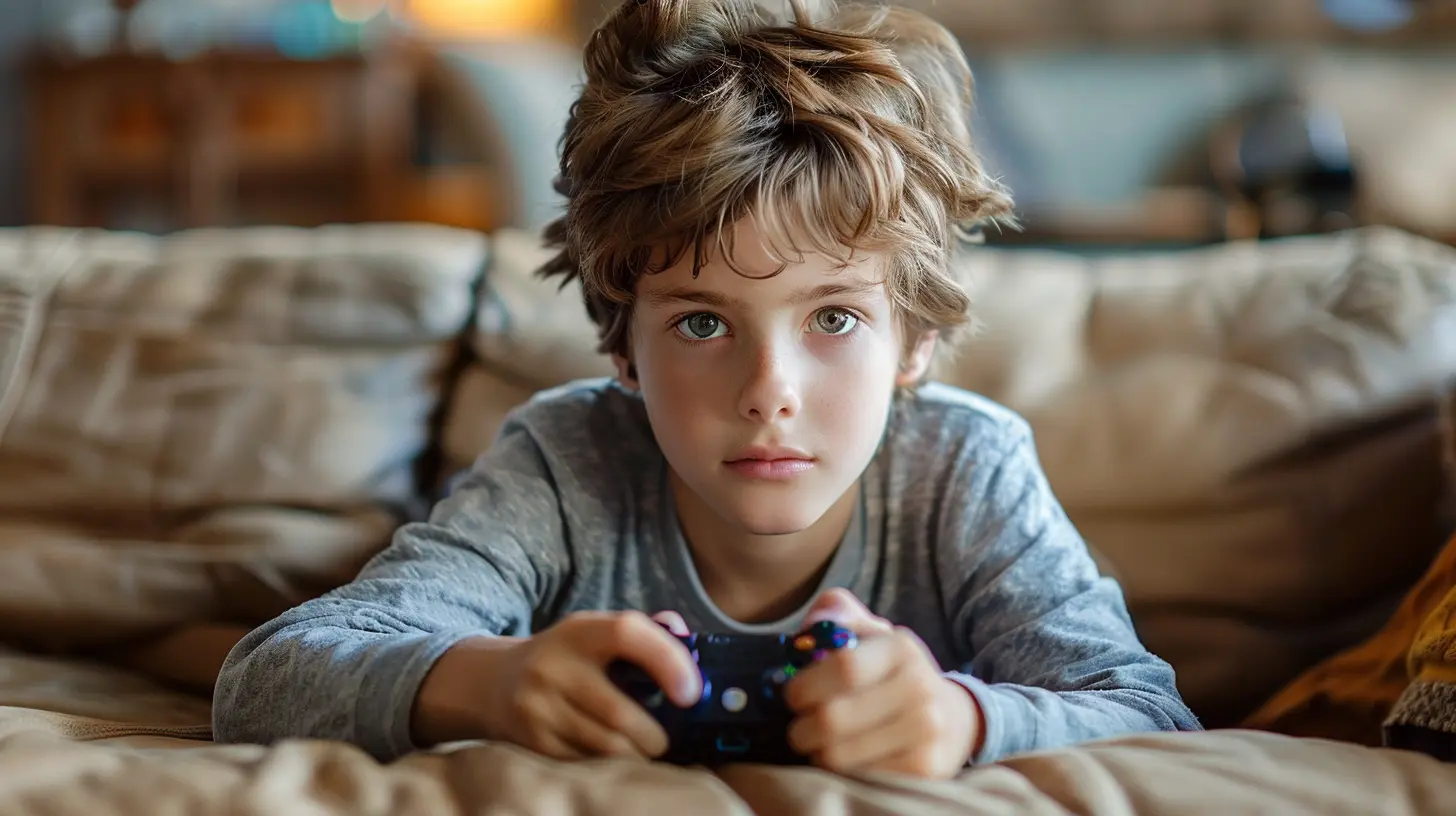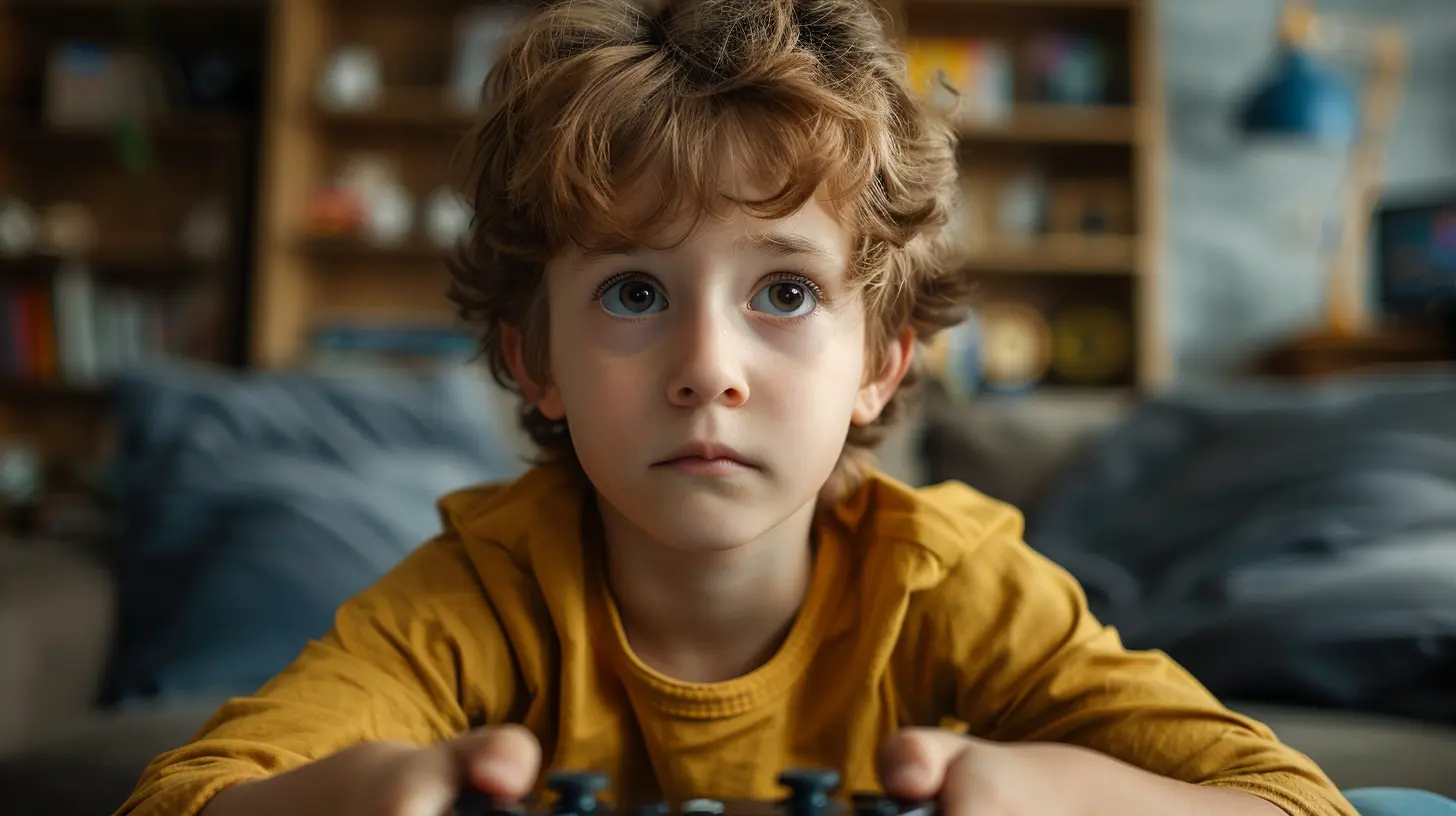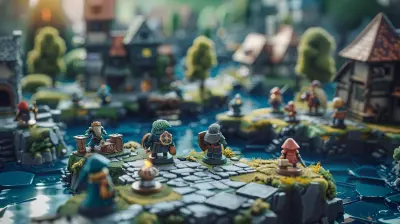How to Recognize When a Game Is Too Difficult for Your Child
24 October 2025
Let’s face it: kids are basically tiny humans with the emotional resilience of a Kit-Kat in the sun. One moment they’re giggling while stacking virtual blocks, and the next? Rage-quitting because a pixelated raccoon wouldn’t jump as they commanded. Ah, video games—both a joy and, occasionally, a controller-throwing nightmare.
As a parent or guardian, you’re probably scratching your head wondering: _"Is this just part of the game... or is this game actually too difficult for my kid?"_
You’re not alone. In this oversized jungle of high-scores, loot boxes, and boss battles, figuring out if a game’s difficulty level is appropriate for your child can feel like trying to solve a Rubik’s cube... blindfolded... underwater.
Fear not! Grab a snack, pull up a chair, and let’s break down how to spot the signs that a game may be turning into a digital Mount Everest for your little adventurer.
🎮 Why Game Difficulty Matters More Than You Think
Before we dive into the telltale signs, let’s talk a bit about why this matters.Games aren’t just time-fillers anymore. They’re teeming with puzzles, strategy, hand-eye coordination, and storytelling. When appropriately challenging, they foster creativity, patience, and problem-solving skills. But when the difficulty tilts too far north? It’s like trying to teach calculus to a goldfish—frustration replaces fun.
Kids may not always communicate their struggles directly, especially if they’re eager to impress or simply too stubborn to admit defeat (we see you, mini-competitive souls). That’s why it’s vital to know what to look for.
🧠 Sign #1: Your Child Is Losing Their Mind (and Their Temper)
Okay, maybe not literally, but if your kid starts behaving like a mini-Hulk every time they can’t clear a level, take note.Common Red Flags:
- Screaming, throwing the controller, or storming off- Gradual transformation into a rage potato
- Repeating “It’s not fair!” like it’s their new life mantra
Games should challenge, not traumatize. If a game is turning playtime into temper time, it might be time to pump the brakes and evaluate its difficulty.
🧩 Sign #2: Constantly Asking for Help
Let’s be real—asking for help isn’t bad. We all do it. Heck, I once asked Google how to boil water (don’t judge). But if your child is repeatedly running to you to complete every level, defeat every boss, or solve every puzzle… Houston, we have a difficulty problem.Key Questions to Ask Yourself:
- Is my child relying on me more than they’re playing on their own?- Are they progressing without assistance or totally stuck?
- Could I beat this game with one eye closed and a slice of pizza in hand?
If your kiddo treats you like their personal cheat code, it might be a sign the game demands more than their developmental stage can handle.
👀 Sign #3: No Progress, Just Pixelated Purgatory
Some games are designed to be slow burners. But if your child has been stuck on the same level since the dinosaurs roamed the earth, the game's difficulty might be to blame.Watch for:
- Days or weeks spent on one level- Increasing levels of frustration without accomplishment
- More time watching “how-to” videos than actually playing
A good game should offer a sense of achievement. If your child isn’t leveling up—in any sense of the word—it’s time to re-evaluate.
😩 Sign #4: Drained Energy and Diminished Confidence
Games are supposed to be fun, remember? Not soul-sucking confidence eroders disguised in flashy graphics.If your kid seems emotionally zapped every time they log off, pay attention. A too-difficult game can make them feel inadequate, especially if they compare themselves to friends who “totally crushed that boss in one try, duh.”
Emotional Clues:
- “I’m just not good at games.”- “I always lose.”
- “Everyone else is better than me.”
That’s the digital equivalent of a sad trombone playing softly in the background. Not all victories are about winning—sometimes, just feeling competent and having fun is enough.
🧒 Sign #5: The Game Is Designed for an Older Audience
There’s a reason we don’t hand toddlers a copy of Dark Souls. Some games are made for older brains—ones that can understand complex rules, nuanced storytelling, or ethical decision-making (yes, games are that deep now).Even if your kid is a prodigy, age-appropriate design matters. A game rated "E for Everyone" doesn’t automatically equal “easy,” either. Always look beyond the rating.
What to Check:
- Reading level and vocabulary requirements- Complexity of game mechanics
- Time required to make real progress
- Emotional maturity needed for in-game choices
A 7-year-old might not do well in a game where emotional manipulation is part of the story arc. Just sayin’.
🛠️ What You Can Do About It
Alright, so now you’ve identified the game is harder than trying to explain TikTok to your grandparents. What now?1. Adjust the Difficulty Settings
Most games these days are wonderfully accommodating. Look for things like “Easy,” “Story Mode,” or “Beginner.” This isn’t cheating—it’s customizing the experience!2. Co-Play Together
Be your kid’s gaming buddy. Not only is it bonding time, but you’ll be able to assess the challenge level directly. Plus, nothing says “cool parent” like tag-teaming a zombie invasion.3. Show Them It’s Okay to Walk Away
Sometimes, the bravest thing is to say: “You know what? This game’s just not for us right now.” Normalize stepping back and trying something else—just like not every book or movie is for everyone, not every game will be the right fit.4. Replace with Engaging Alternatives
Swap that rage-inducing title for a game that’s challenging but fair. Think puzzle games that reward effort, adventure games with adjustable help, or sandbox games where the only limit is their imagination (hello, Minecraft!).📚 A Few Kid-Friendly Games That Balance Fun + Challenge
If you’re looking for a list to print out and tuck in your back pocket while navigating your next GameStop trip, here we go:- Minecraft – Endless creativity, minimal pressure
- Animal Crossing – Chill vibes, adorable avatars, zero screaming
- LEGO Video Games – Familiar characters, humorous gameplay, forgiving difficulty
- Super Mario Odyssey – Fun, colorful, and the learning curve is gentle
- Scribblenauts – Problem-solving + creativity = win-win
Of course, every kid’s different, so trial and error is part of the game (pun intended).
🧘 Let Games Be Fun Again
At the end of the day, games are meant to be a safe space for curiosity, creativity, and yes—challenge. But not so much challenge that your child ends up rage-crying into their cereal. Pay attention to the signals, trust your gut, and don’t be afraid to say, “This might be too much right now.”Tuning a game’s difficulty to match your child’s abilities doesn’t make the experience less valuable—it makes it _enjoyable_, _empowering_, and ultimately _worth playing_.
And remember, just because they’re stuck now, doesn’t mean they’ll be stuck forever. They may surprise you next week by beating that boss blindfolded while chewing gum.
(Okay, maybe not the gum part. Let’s not get wild.
all images in this post were generated using AI tools
Category:
Games For KidsAuthor:

Emery Larsen
Discussion
rate this article
1 comments
Max Harmon
Great tips! Recognizing when a game is too tough can really enhance your child's fun!
October 26, 2025 at 5:19 PM

Emery Larsen
Thank you! I'm glad you found the tips helpful. Recognizing difficulty is key to ensuring a positive gaming experience!


